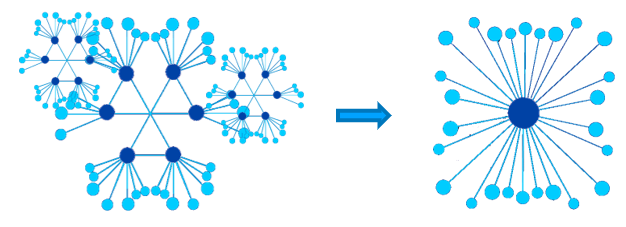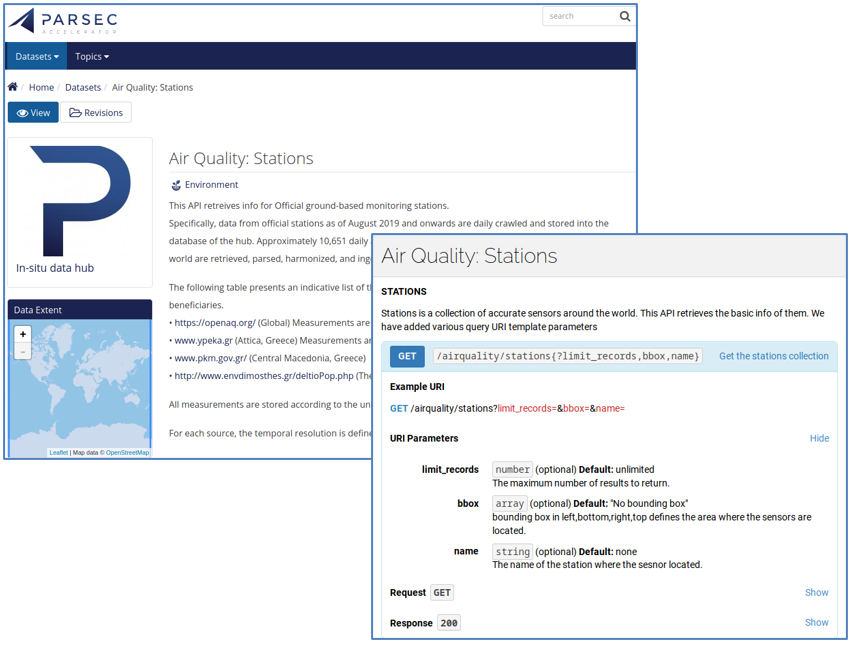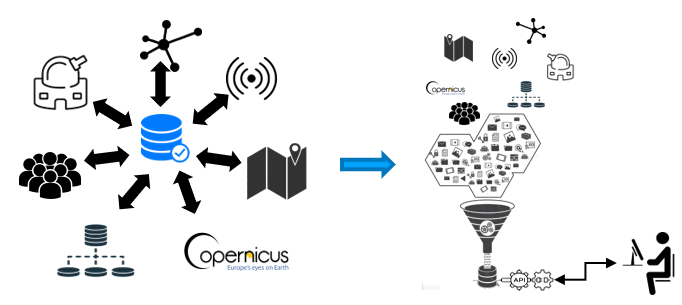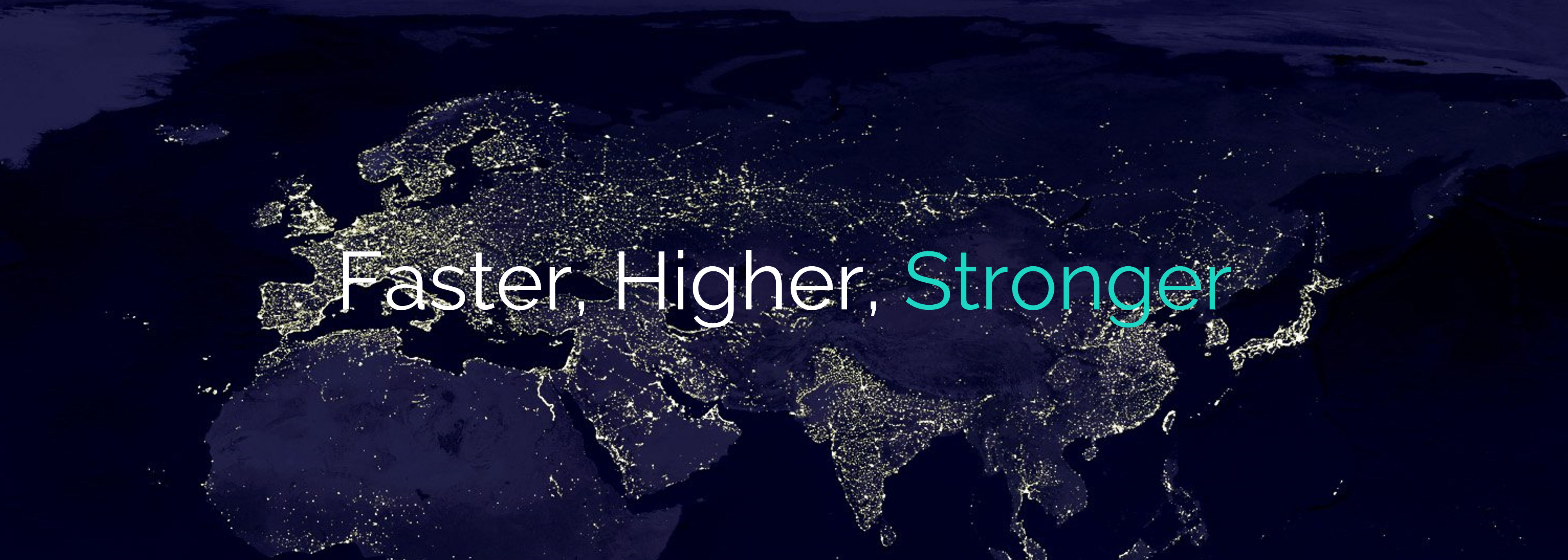To build an Earth Observation-based service that offers large added-value to your customers, you will need to have a highly accurate picture of what is happening, when and where. The In situ Data Hub allows you to combine and effectively use a great variety of local (“in situ”) open data sources. This article details how In situ Data Hub solves the challenge of in situ information being scattered in decentralised data hubs by bringing this open source data to a central platform to be used by innovators for creating new and more efficient products or services. It also gives more technical information on the In situ Data Hub with concrete use case examples.
The fragmented landscape of in situ sensing
Currently millions of sophisticated embedded measuring devices are being networked together providing an extensive monitoring system for the Earth. Intelligent in situ sensor-webs, based on converging technologies of micro-sensors, computers, and wireless telecommunications, facilitate and support critical activities such as the monitoring of remote environments, risk assessment and hazard mapping, renewable resource information management. Together with the information from the satellites, in situ data can provide an integrated earth sensing framework.
The amount of in situ data is expected to increase over the next few years. Nonetheless, despite the availability and wealth of information, one of the major problems of exploiting in situ data is that this information is decentralised. This is due to the fact that every initiative creates a small information hub to serve its needs. This clustering primarily leads to inaccessible information sources as well as data fragmentation. If all the available data sources would be portrayed on a data map, it would result in a chaotic network with multiple interconnected hubs (see figure 2). The challenge of establishing a centralised and speedy access to valuable resources is one of the key elements to develop value-added services that can be utilized by small and medium-sized enterprises (SMEs) and start-ups to support their products.

Cloud of in situ measuring devices

From clustered data hubs to centralised information structures
PARSEC In situ Data Hub as a centralised and user-friendly information source
As an answer to this challenge PARSEC introduces the In situ Data Hub. The In situ Data Hub aims to collect and centralize the available data from various sources, creating a single access data point and making this information readily available to the user through a convenient and friendly user environment.
What is the In situ Data Hub?
The In situ Data Hub is an automated data acquisition and pre-processing system, acting as a multi-source repository of in situ measurements, and data derived from instruments located at the point of interest and in direct contact with the subject of interest. Taking advantage of the In situ Data Hub services you can combine and effectively use a great variety of local – in situ – open-data sources for different sectors. The available information is essential for fine-tuning and enhancing satellite-based observations, serving as an important data-source for empowering new services or products.

A user-friendly interactive environment, with well documented and analytical APIs
In situ Data Hub expands and adapts to its users
The software infrastructure of the In situ Data Hub is developed to allow future integration and expandability of data provision services enabling it to accommodate any datasets. In other words, the record sets of the In situ Data Hub will be expanded and enriched with new sources of information providing access to data on different domains, from air-quality, to energy, or economy. To this end, the hub is continuously being updated and PARSEC winners of the first (#100PARSEC) and second stage (#15PARSEC) can have fit for purpose services. After accessing the In Situ Data Hub you can automatically discover and retrieve data. The user-friendly interactive and analytical environment, exposing well documented and analytical APIs (Application Programming Interface) for all sources. You also have access to an essential “analysis-ready” layer of the in situ datasets that you can directly integrate into the datacubes of the Big Data Toolbox, another PARSEC Business Catalyst, and thus have them available for immediate use.

Acquired information is stored and made readily available through a uniform and user-friendly environment
You can use the In situ Data Hub datasets for various purposes, such as:
- the production of value-added products, particularly in combination with satellite data
- validation of parameters extracted with EO techniques and algorithms
- training neural networks
- calibration or visualisation purposes
- discovering insights based on big data analysis that can combine observations, time,
geolocation information etc. - services of operational monitoring, warning and reporting to public institutions or
Where do the data come from?
Currently the In situ Data Hub provides environmental data focusing on air quality for approximately 10 pollutants, originating from different data sources across the world, including:
- 12.000 official ground-based monitoring stations providing more than 10.000 daily measurements.
- 30.000 other sensors, providing approximately 27.000 measurements daily, per minute or per hour.
- Copernicus Atmosphere Monitoring Service (CAMS) past and present information on atmospheric composition as 3 days forecast and 10km resolution.
The In situ Data Hub will continue being enhanced with more information and provide customized services to the PARSEC winners during and after the end of the acceleration program and is also open and available to interested users in Europe and beyond (access the In situ Data Hub here). The In situ Data Hub is provided by the PARSEC partner Draxis Environmental SA.
You just read an article about the In situ Data Hub, one of the three PARSEC Business Catalysts. PARSEC is offering these services to all winners of Open Call 1 and Open Call 2.





